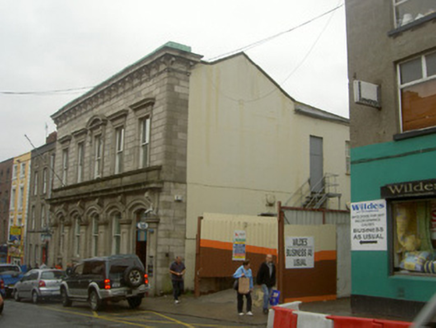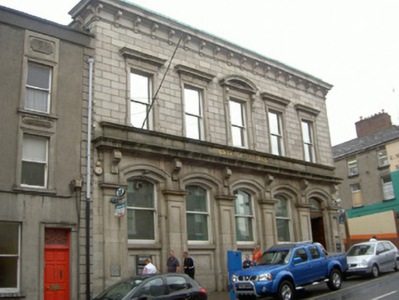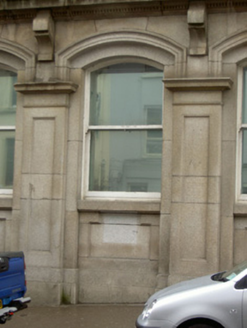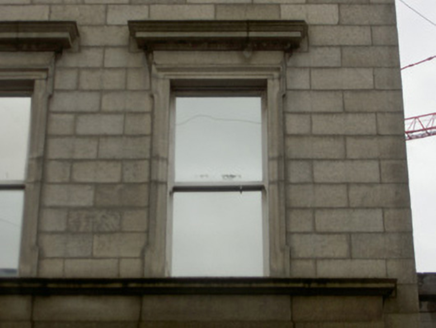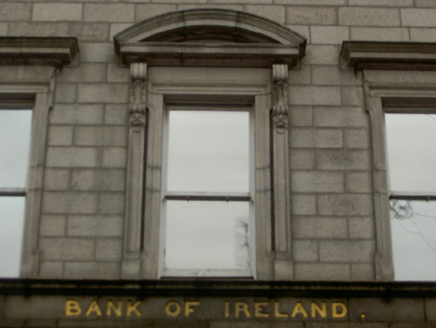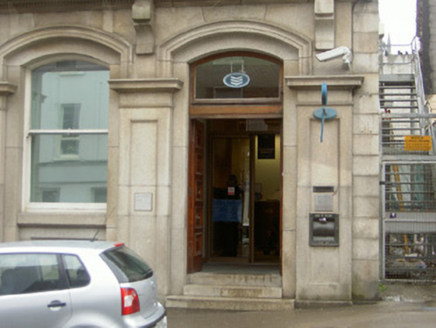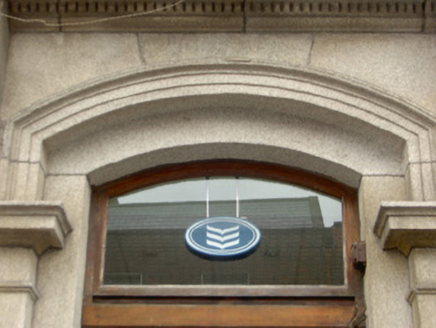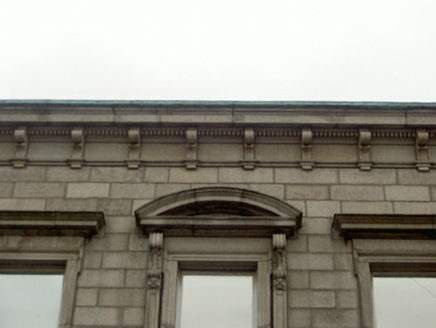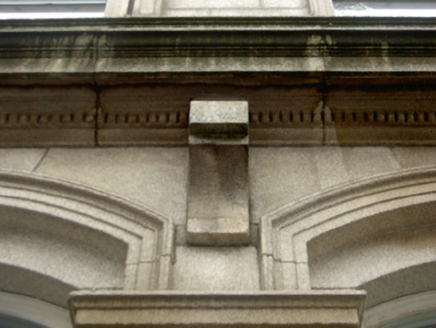Survey Data
Reg No
13619025
Rating
Regional
Categories of Special Interest
Architectural, Artistic
Original Use
Bank/financial institution
In Use As
Bank/financial institution
Date
1870 - 1880
Coordinates
309030, 275222
Date Recorded
29/07/2005
Date Updated
--/--/--
Description
Attached five-bay two-storey bank, designed 1873; built 1873-5, on a square plan with shopfront to ground floor. Occupied, 1901; 1911. Pitched (south) and hipped (north) slate roofs behind parapet with roll moulded clay ridge tiles, cut-granite coping to gables, and concealed rainwater goods with cast-iron rainwater goods (north) on rendered eaves. Granite ashlar wall to front (south) elevation on cut-granite stepped plinth with dentilated ogee-detailed cornice on consoles on stringcourse below copper-covered parapet; rendered surface finish (remainder). Cut-granite shopfront to ground floor with panelled pilasters on stepped plinths supporting dentilated ogee-detailed cornice on consoles below inscribed blocking course. Square-headed central window opening (first floor) cut-granite architrave with panelled pilasters on padstones supporting ogee-detailed segmental pediment on "Acanthus"-detailed fluted scroll consoles, and cut-granite lugged surround framing one-over-one timber sash window. Square-headed flanking window openings, cut-granite lugged surrounds with ogee-detailed hood mouldings on blind friezes framing one-over-one timber sash windows. Street fronted with concrete footpath to front.
Appraisal
A bank erected to designs signed (1873) by Sandham Symes (1845-1892), Architect to the Bank of Ireland (appointed 1854), representing an important component of the later nineteenth-century built heritage of Drogheda with the architectural value of the composition, one recalling Symes-designed banks in New Ross (1860; see 15605239) and Waterford (1875; see 22501076), confirmed by such attributes as the compact near-square plan form; the construction in a silver-grey granite demonstrating good quality workmanship; the arcaded shopfront; the slight diminishing in scale of the openings on each floor producing a feint graduated tiered visual effect; and the parapeted roof. Having been well maintained, the form and massing survive intact together with substantial quantities of the original fabric, both to the exterior and to the interior, thus upholding the character or integrity of a bank making a pleasing visual statement in Saint Laurence Street. NOTE: Occupied (1901) by Samuel Teeling (1851-1911), 'Agent [of] Bank of Ireland' (NA 1901); and (1911) by Robert Symes (1850-1917), 'Bank Agent' (NA 1911).
